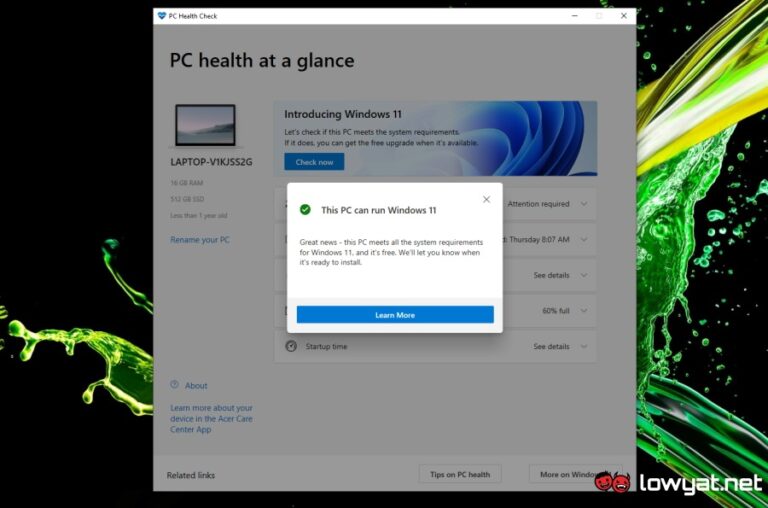
If your machine is compatible, you can download the Windows 11 update for free when it becomes available. To determine if your current PC will be able to run Windows 11, you can check out this list of system specifications on Microsoft's website, or in the chart below. Option 3: Check Microsoft's list of system specifications for Windows 11 Windows 11 Minimum Requirements: Processor: 1 gigahertz (GHz) or faster with 2 or more cores on a compatible 64-bit processor or System on a Chip (SoC) Memory: 4 GB RAM Storage: 64 GB or larger. Here's more information from TechRadar on how to use it to determine your own device's compatibility with Windows 11. The Github app, created by a developer not affiliated with Microsoft, has a less friendly interface, but it should give you more information and go into more detail about various potential compatibility issues.

Option 2: Try the WhyNotWin11 app to check Windows 11 compatibilityĪn open-source app called WhyNotWin11 is a good alternative to the PC Health Check app.

Windows 11 Installation Assistant This is the best option for installing Windows 11 on the device you’re currently using. After running the test, the app will confirm whether the computer can run Windows 11. The user simply needs to download the app, open it, and run the program by clicking on the Check Now button. 5, but Microsoft is planning a staggered rollout, and many devices will not see the upgrade until 2022. Before installing, please refer to the PC Health Checkapp to confirm your device meets the minimum system requirements for Windows 11 and check the Windows release information statusfor known issues that may affect your device. Microsoft has a downloadable PC Health Check app that can help to determine compatibility. The official Windows 11 release date was Oct. Most machines built after 2016 include the TPM 2.0 chip required to run Windows 11.If your machine is compatible, you can download the Windows 11 update for free. Similarly, TPM (short for “Trusted Platform Module”) helps with security by providing encryption of your data thanks to a special chip inside your machine. Aside from checking your BIOS, you can check System Information within Settings to see if your system supports Secure Boot. Secure Boot is a UEFI feature that only allows signed operating systems to work, which can help protect you from malware. RELATED: What's the Difference Between Windows 10 and Windows 11? What Are Secure Boot and TPM Anyway? If these features are enabled and your PC still doesn’t pass the check, there’s another reason why your machine is incompatible with Windows 11.

When you run the check again, you will hopefully pass the test. Note: If you don’t see anything about TPM or Secure Boot on your computer’s UEFI or BIOS settings screen, your PC may be too old to have these features.Īfter exiting, your PC will restart and Windows will load.


 0 kommentar(er)
0 kommentar(er)
